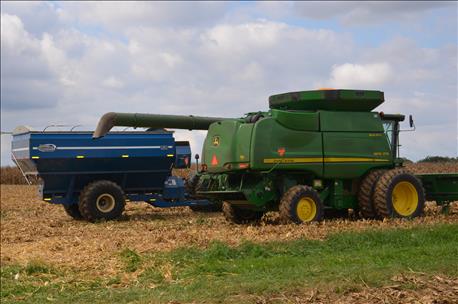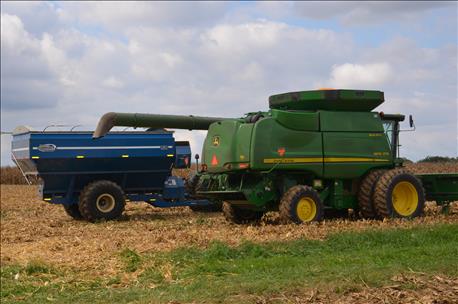
The National Corn Growers Association launched a major effort to educate members as to why it’s important to fill out government surveys. Consequently, the Indiana Corn Marketing Council and Indiana Soybean Alliance also initiated campaigns. These groups deserve credit for making an effort to inform farmers about the validity of these surveys.
Like it or not, government agencies tend to make better decisions when their information is adequate and accurate. Those decisions impact a number of things, from crop insurance to farm programs.
Here are five excuses farmers sometimes give for not returning surveys. Each one is debunked with information largely provided by ICMC and ISA.

REPORT YIELDS: If you’re one of the select few chosen at random to receive a USDA survey, several farm groups urge you to fill it out. Otherwise, county yield information may be missing or inaccurate.
1. “I don’t trust the government with my information about yields and crops.”
The truth is that the National Agricultural Statistics Service is bound by strict regulations to protect the identity and privacy of people supplying information for surveys. The information remains confidential and is used to make estimates. It may also factor into decision-making on current and future farm programs.
2. “No one is going to ever use the information anyway!”
Where do you think information like county yields, reported in late winter of the year following the cropping season, comes from? It comes from information provided on NASS surveys. ICMC reports that in 2015, five Indiana counties couldn’t publish corn yields because of insufficient responses. Under NASS rules, yields for two adjoining counties were also withheld.
These seven counties could be just the tip of the iceberg. If counties that have been receiving the minimum number of responses allowed receive less in the future, yields for those counties won’t be published either.
3. “We’re better off if the government doesn’t know what we’re doing out here.”
There is no data to support that shortsighted comment. In the absence of accurate information, people make estimates and assumptions. These seldom result in programs that are better than ones that might have been enacted if accurate information was available.
4. “If I throw my survey away, it won’t matter. Enough other people will return them.”
What if everyone thinks that way? Very few NASS surveys would get returned. As noted, that’s already happening in some counties.
Here’s the kicker. NASS selects farmers to receive surveys at random according to a very sophisticated process designed to deliver statistically valid results. If someone doesn’t return a survey, NASS doesn’t send an additional one to someone else. Instead, there is simply one less data point for that county.
5. “It takes too much time. Besides, I don’t pay much attention to snail mail anymore.”
The surveys typically aren’t difficult to fill out. Questions have been refined over time. And if you are into computers more than snail mail, you can return your response electronically. You simply use the individual code on your survey label to file your response. In fact, if you visit ncga.com/nass, you’ll find a link at the bottom of the home page that allows you to complete and submit the NASS survey you received in the mail online.
About the Author(s)
You May Also Like




